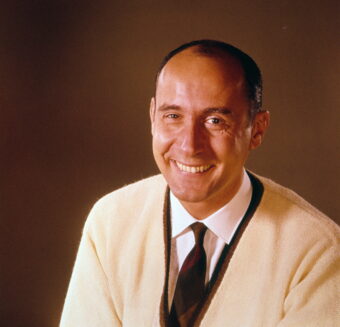Tim Bergling had finally done it: scaled it back, pared it down, streamlined the operation. Gone were the confetti cannons and screaming fans. Jettisoned were the Vegas gigs, the festival gigs, the club gigs, the gigs international and infinitum. The schedule had shrunk from everywhere, all the time, to the big house at 1474 Blue Jay Way.
It was early 2018, and at home in the Hollywood Hills, Bergling was busy doing what he had told his millions of fans he would. Up here he was making music with his friends. Up here he was tan and sober. Up here he was hosting barbecues. Up here he was excited about what he was creating—a fresh sound with new influences: Avicii 2.0. Up here, just briefly, everything was exactly right.
Purchased in 2013, 1474 Blue Jay Way is everything you think the mansion of an international music superstar might be—7,000 square feet of stone and glass, multiple water features, lighting operated by remote control, with views of Los Angeles below and the ocean beyond. Down the street from where George Harrison once lived, 1474 Blue Jay Way was for Bergling both home and happy ending—the place he traded all that confetti for when he retired from touring in 2016, when he was 26 years old. “I will however never let go of music,” he wrote in an open letter announcing the retirement. “I will continue to speak to my fans through it.”
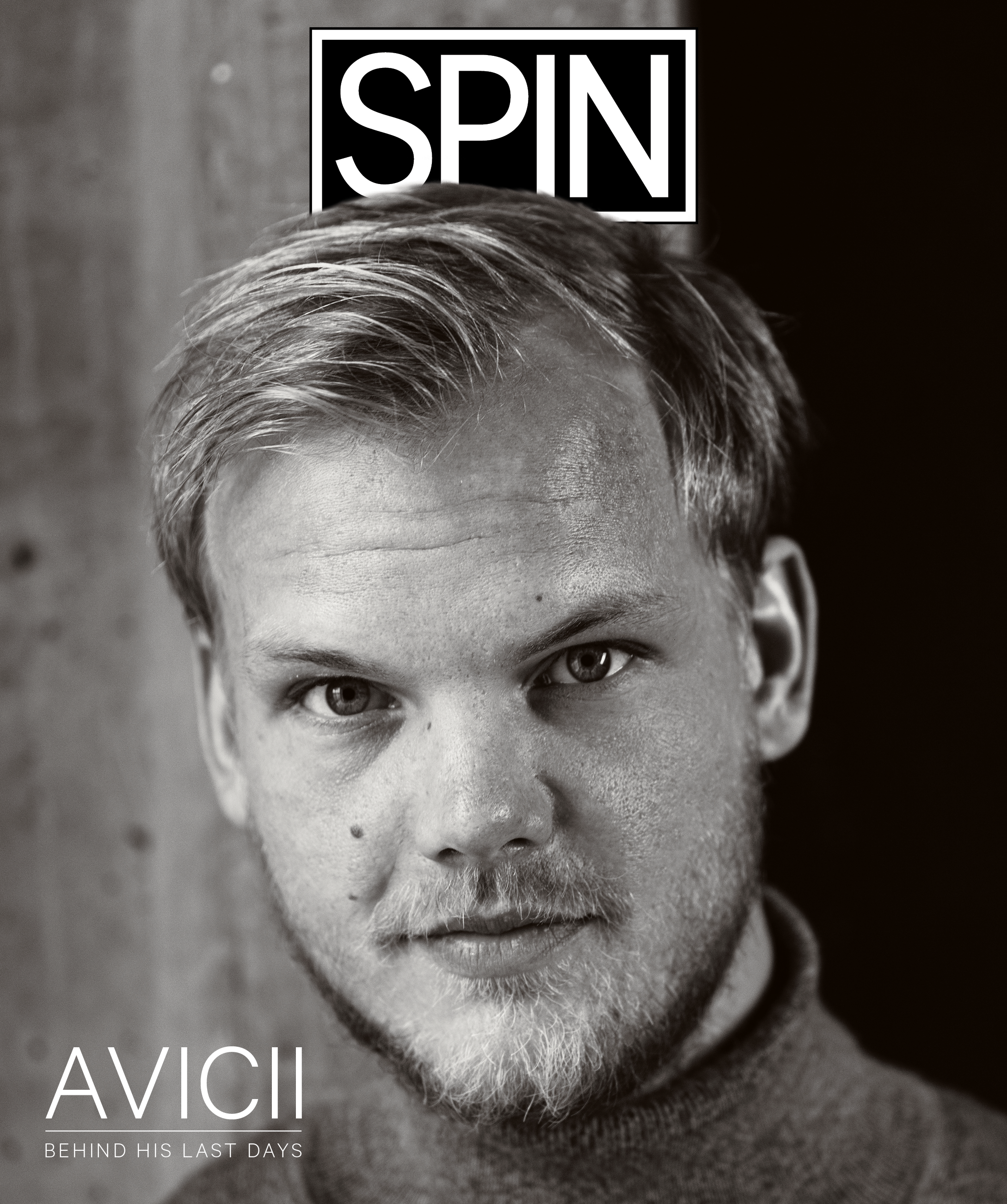 Sean Eriksson
Sean Eriksson
The house’s central command station was the studio—his favorite place. In a space crowded with guitars, keyboards, laptops, and amps framed by unhung Avicii posters, Bergling welcomed a cadre of associates. There was longtime collaborator and close friend Carl Falk, production duo No. 1 Kristoffer Fogelmark and Albin Nedler, and production duo No. 2 Salem Al Fakir and Vincent Pontare, who make music as Vargas & Lagola. All these fellow Swedes had worked with Bergling on his two previous albums, 2013’s True and 2015’s Stories, as well as in the years prior, when he was just a baby-faced kid from Stockholm, all cheekbones and blond hair.
There was also Bergling’s housekeeper Fabiola, who kept the “boys” fed and hydrated while they worked. Geffen Records President Neil Jacobson, an A&R for Bergling since the beginning, made house calls. British singer/songwriter Joe Janiak was the new guy, recruited by Falk to work on lyrics. But Bergling, still burnt out on strangers, wasn’t so keen on fresh faces.
“I remember Tim calling me from his house the day Joe was arriving," Falk recalls. "He was like, ‘Maybe we should start the session with just you and me and see how it goes.’ I was like, ‘Tim, Joe is outside your actual door, waiting. I think you should open the door for him.”
“So, I rang the doorbell, and his housekeeper opened the door and all the sudden I was in the studio with Tim, making songs," adds Janiak. "It was all very simple.”
 Sean Eriksson
Sean Eriksson
Dressed down in house slippers and eating mostly guacamole, Bergling was a warm and unpretentious collaborator. That day, the guys talked for a while, jammed on their guitars and wrote a song, a really good one, called “Fades Away.” Janiak stayed for 14 hours, from the jump experiencing the intense Tim Bergling work ethic that had, in previous eras, proved problematic.
Says Falk of Bergling in 2015, “He'd call eight hours after I left the studio, and he’d still be there with his half-eaten cheeseburger laying on the laptop. It was horrible to see. We had to make sure that he slept, that he ate.”
“You could just see he was tired," Pontare also notes of the musician's level of exhaustion that year. "We were telling him openly and honestly, ‘After this is done, you should get some rest. You should sleep, man.’”
“The studio was as much a burnout for him as touring. I think the narrative may not be correct in that it was all touring that took him down," Jacobson points out. "If we didn’t have an end time for him, he would stay in the studio for 15 or 16 hours.”
“Time doesn’t, didn’t, really matter for him,” adds Falk.
 Sean Eriksson
Sean Eriksson
Tunnel Vision
Bergling’s obsessive dedication to his art is well-documented in the 2017 documentary True Stories, which outlines, in often grim detail, the period of burnout, illness, and anxiety that preceded Bergling’s retirement. In one scene he works on a song while his lunch sits untouched, for hours, until dinner is served. He then ignores that meal.
This tunnel vision was fueled by Bergling’s ability, per his collaborators, to hear music fully formed in his head. Critics quick to dismiss the sometimes cartoonishly douchey world of EDM—satirized to perfection in a 2014 Saturday Night Live skit in which Andy Samberg literally blows clubgoers’ minds as the David Guetta/Avicii hybrid Davincii—fail to consider that Bergling was said to have a rare gift. His genre was a modern one, but his abilities were closer to that of a composer than a club hitmaker. Plus, he thought that SNL skit was hilarious.
“When we met him, we could instantly tell that this was one of those mad geniuses," recalls Falk. "I’ve only met a couple of people like Tim, who had this twisted way of making music in a way few people can understand.”
“Let me tell you, I don’t use the G-word lightly," insists Jacobson. "But Tim’s vocal productions and his ability to direct a vocal … that was his genius. He was a really good producer, but it was his ear for melody that made him just unbelievable.”
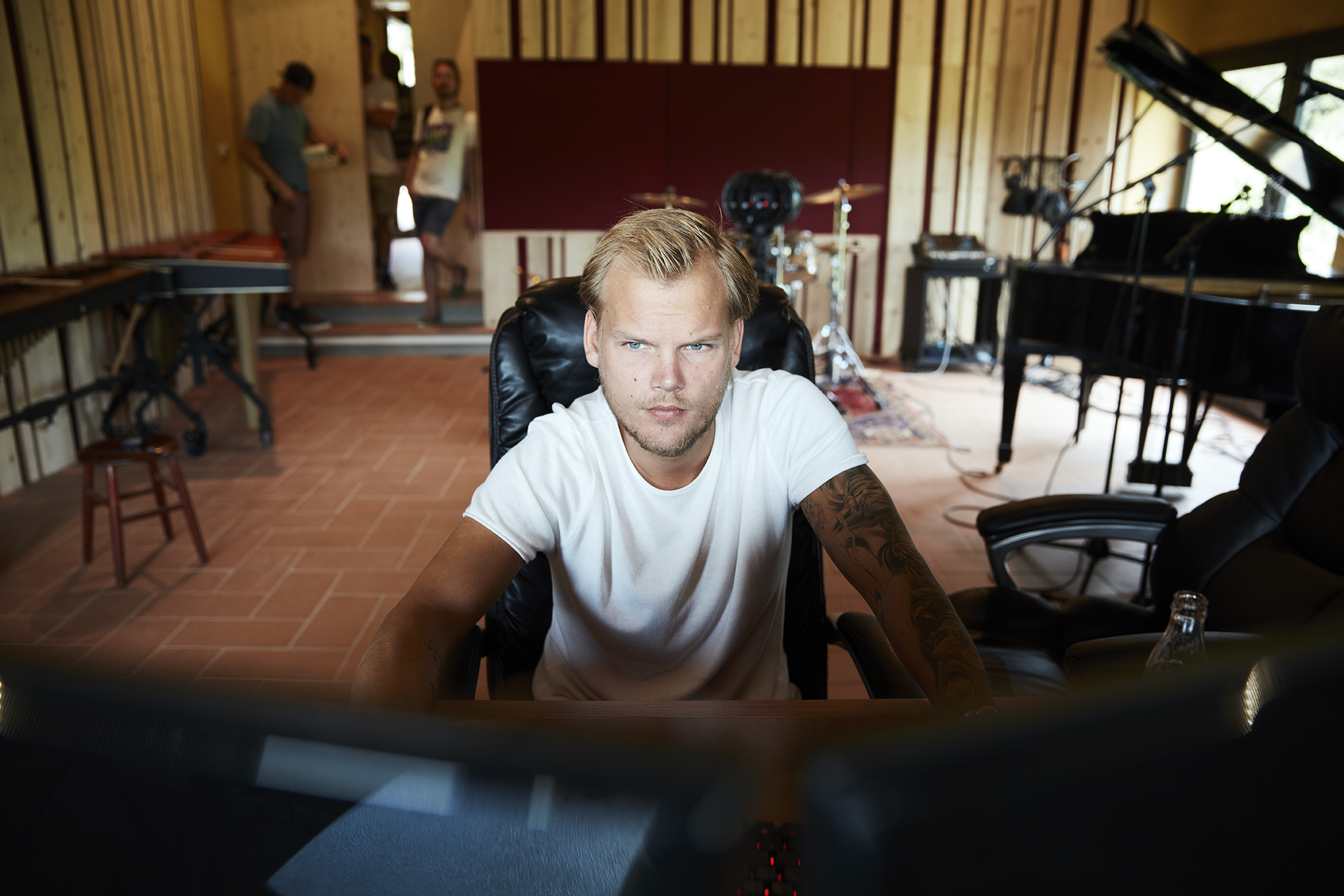 Sean Eriksson
Sean Eriksson
In True Stories, Wyclef Jean—who recorded his track “Divine Sorrow” with Bergling in 2013—says he’d met only one other person like Bergling, for whom “the orchestra lives in his head. His neuro fully understands every dot and how everything should go, so it's like an inside symphony.” That other person was Michael Jackson. The challenge for Bergling and his collaborators was transcribing what he was hearing into music that sounded exactly like it did between his ears.
“One thing I really admired about Tim was that he was never one to go, ‘I guess that’s good enough. Let’s move on.’ We had to find what we were searching for,” Janiak says of Bergling's process. “And because he was a perfectionist, maybe six hours after he finished something, he’d be like, ‘Actually, I'm not sure.’ Then eventually it was like, ‘Oh wait, no, that was right.’”
“He could spend hours on the same line, repeating it over and over and perfecting the simplest melody,” Fogelmark adds. “Tim became one with what he was doing.”
In a recent unreleased interview with the label, Imagine Dragons’ Dan Reynolds discussed Bergling's drive: "He knew what he wanted to hear. I remember singing melody after melody, like, 'na na na na!' and he would be like, 'Hmm.' Then I sang the melody that became 'Heart Upon My Sleeve' and his eyes lit up. He was like, 'Yes!'"
“And then when he felt happy with what he’d done, it all kind of made sense to everyone that had been standing there listening," explains Al Fakir. "He was incredible that way. He never stopped until it was what he was hearing in his head.”
Up on Blue Jay Way, the compositions swirling in Bergling’s head were being transformed into new music. Falk, Fogelmark and Nedler, and Vargas & Lagola had all touched down from Sweden for sessions throughout February, March and April of 2018. The hours were still often long, but the sense of dread that permeates many of the more uncomfortable studio scenes in True Stories had been transmuted into excitement.
“It didn’t seem like Tim was creating out of fear,” Janiak says. “He told me he had finally started enjoying music again.”
 Sean Eriksson
Sean Eriksson
Talking About Nirvana
As the artist continued his personal evolution, so, too, did his ideas about and intentions for his music. Songs were less explicitly dance-oriented, leaning more into pop, rock, and genre hybrids like the one Bergling forged when he first released the country-leaning “Wake Me Up.” Booed when he debuted it in 2013 at Miami’s Ultra Music Festival, one of the biggest yearly gatherings in EDM, the track remains Avicii’s biggest hit, with more than 855 million plays on Spotify alone.
Recalls “Wake Me Up” vocalist Aloe Blacc, "When we performed at Ultra, it was just awkward. I don’t think even the sound people knew what they were doing. Everybody else at the festival had air cannons and pyro and half-naked girls dancing onstage. Then here comes Tim with drums, banjo, fiddle, guitar and three singers.”
“We had brought in Mac Davis, this classic country singer who was 70 years old, performing at Ultra like, ‘What am I doing here?’" says Jacobson. "Aloe and [song co-writer] Mike Einzinger performed, and when they got offstage it was like, ‘Was that bad?’”
Al Fakir notes that he talked to Bergling a few days after that show. “He was like, ‘Don't worry about that. They'll understand later,’” Al Fakir says. “And they did.”
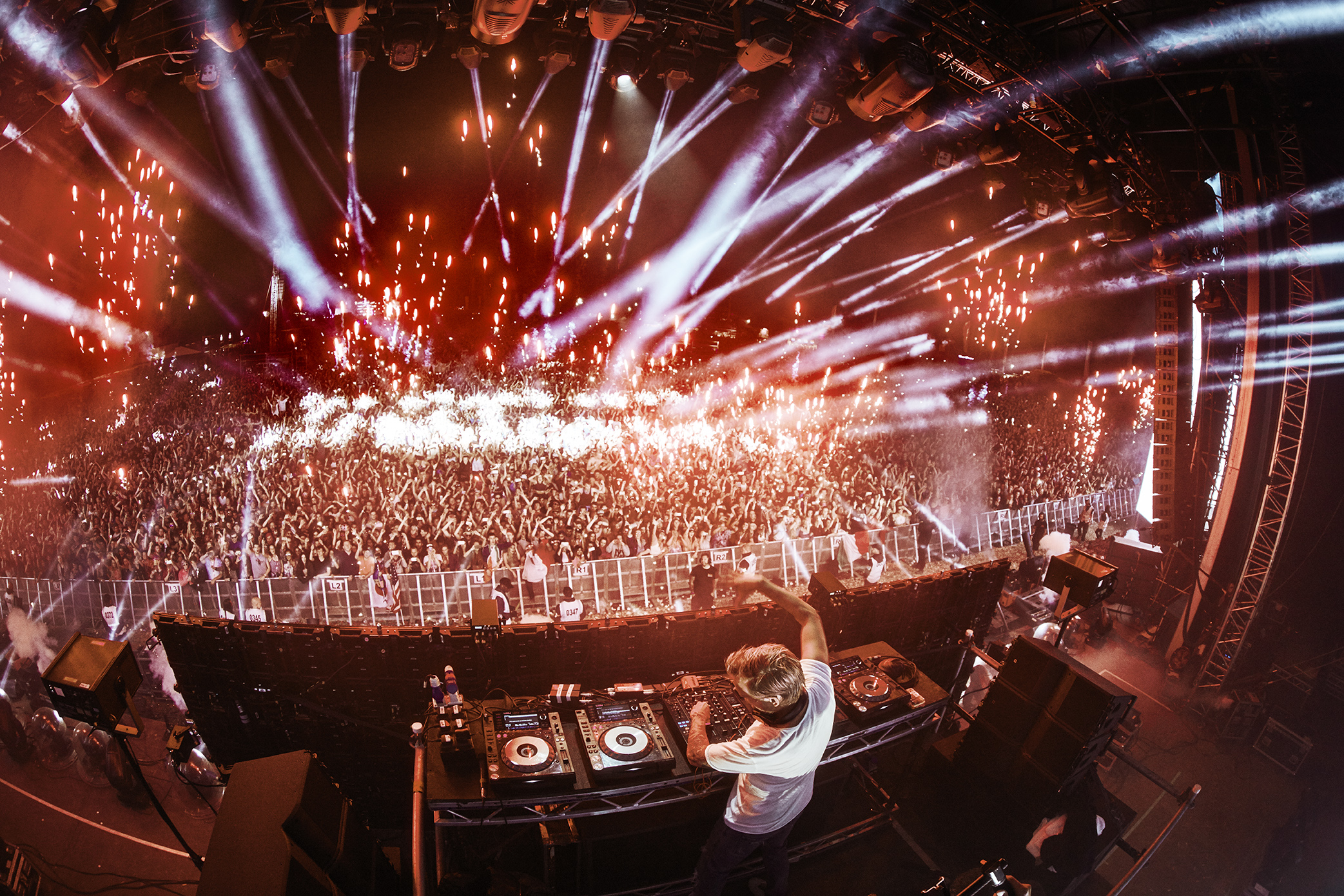 Sean Eriksson
Sean Eriksson
Up on Blue Jay Way, Bergling was once again colliding genres and chasing down the sounds in his head. He played the guys Swedish lullabies, selections from the Gladiator soundtrack, and vintage African vinyl. He made plans to take them all to Kenya after the album was released so they could record with the Maasai.
The emerging sound was altogether smaller, less densely layered, and less suited for arenas and mega-festivals, with drops now rendered from strings rather than body-pummeling synths. It was altogether more Bergling, the thoughtful introvert with the goofy sense of humor, and less Avicii, the Ralph Lauren spokesmodel traversing the globe in his private plane.
Lyrics, previously functioning largely to properly phrase melodies, were also getting more attention. EDM fans who had been told to “put their fuckin' hands up” for a decade were getting older, and Bergling, one of the scene’s primary architects who nonetheless could quote Carl Jung and Herman Hesse, was maturing along with them. He wanted to really say something.
“This time he was talking about the album in more spiritual way,” Falk says. “He was talking about nirvana.”
The last recording session happened on a warm night in mid-April. The next day, Bergling was taking a vacation, 8,400 miles away to Muscat, Oman, and the guys—Janiak, Fogelmark and Albin—saw him off with an evening barbecue. “It was funny,” Janiak says, “because his friends put the food on the table and had to come into the studio six times until he came out to eat. He just wanted to finish the song.”
They had dinner and talked until late with all of Los Angeles twinkling below them. The next morning, Fogelmark and Nedler, who were staying in Bergling's house while he was gone, waved him off to the airport.
 Sean Eriksson
Sean Eriksson
“We said goodbye to him at the door,” recalls Fogelmark. “But when he left, there was a weird feeling, like he was really gone.”
The others also revisited their final interactions with the artist, and getting the news about his death.
“I was on the phone with him when he was at the airport on the way to Oman,” says Jacobson. “We were going back and forth with a list of people he wanted to feature on the record.”
“‘I'm going on a desert safari, but we need to get the record out before the summer.’ That was the last text Tim sent me,” Falk reveals.
Nedler shares, “We texted Tim a photo of ourselves at an LA Galaxy game. He replied, ‘Haha wish I could be there.’”
“Don't forget to send the files for our songs,” Falk wrote to Bergling on April 20, 2018, while vacationing in Sweden, adding a heart emoji before pressing send. Bergling didn’t respond. A few hours later, Falk’s fiancée entered the room. She was crying.
“She said she needed to tell me something," Falk says. "It was, I don’t know … one of those moments where time stops.”
“When the news came to Sweden, Stockholm just shut off," Al Fakir explains. "My brother called. He was in a bar, and he said the bar went silent for a long, long time.”
“It was the morning of Coachella, when the news broke," Janiak says. "I remember crying the whole way there. I don't know even know why I went.”
Blacc was on his way home from LAX when he found out. “I called ["Wake Me Up" co-writer] Mike right away, and Mike had heard as well, and we took a moment together to think about Tim," he says. "It was tough. It hit me really hard.”
Jacobson, who was at home in Los Angeles, recalls: “I was sitting in my backyard having my morning coffee. I just uncontrollably sat on the ground. Your legs give out from underneath you. You don’t even cry.”
At 1474 Blue Jay Way, Fogelmark and Nedler also got the call. Unsure of what else to do, they started packing up the studio, rolling cables in silence while Fabiola wept in the kitchen.
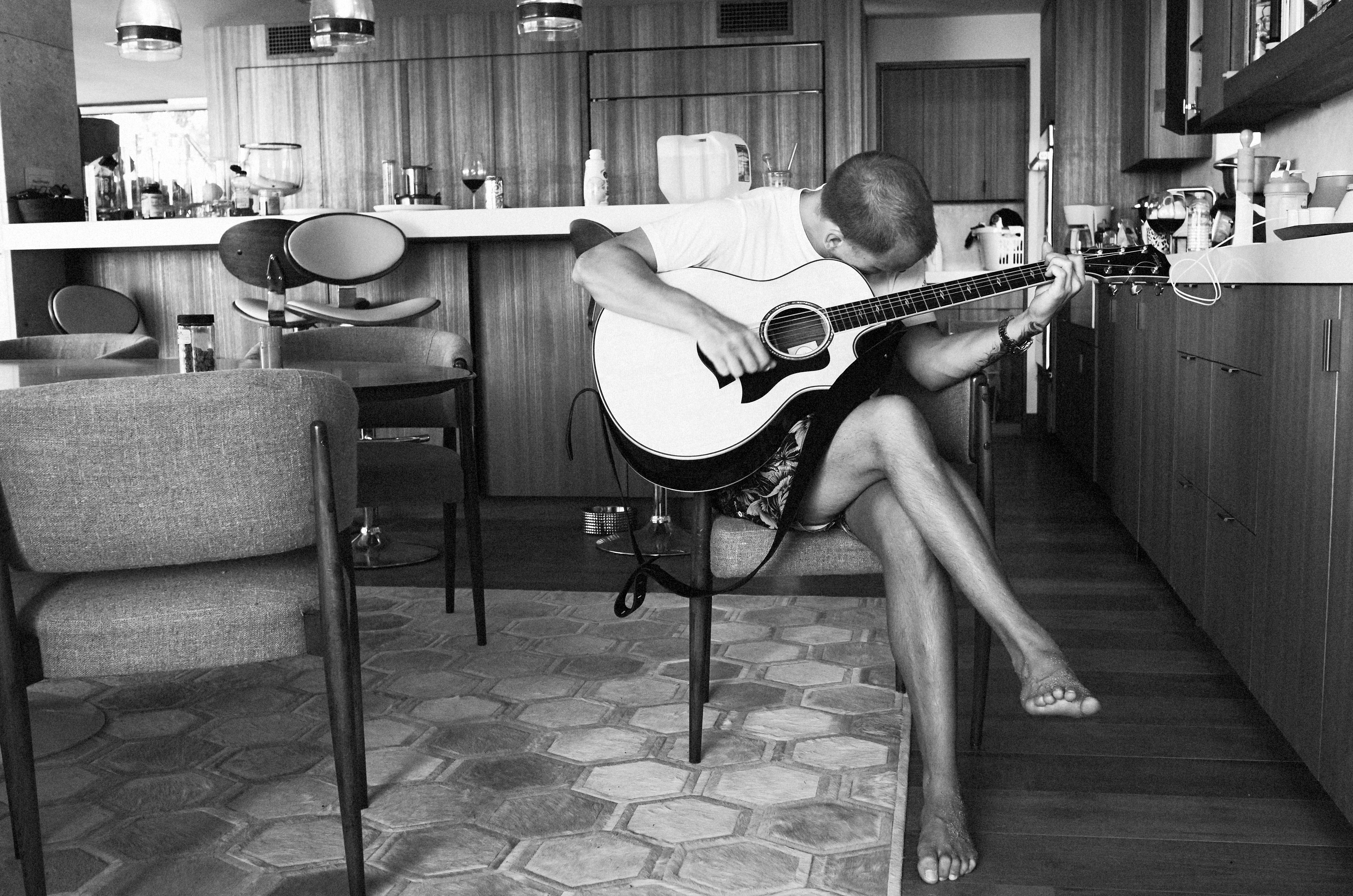 Sean Eriksson
Sean Eriksson
When It's All Over
EDM is a genre almost entirely predicated on the notion of fun. The songs are, by their very nature, meant to make you dance. And how bad could things be if you’re dancing?
Avicii represented the peak of the scene—a new era of music history, something dynamic and unstoppable. He helped define the sound, the markets, the earning potential, the lifestyle possibilities for DJs with big ambitions and the right music. Bergling propelled dance music culture forward in the United States and beyond while riding a tidal wave of his own creation. It wasn’t easy. His trajectory brought us joy—hugging your best friend in the cheap seats when he dropped “Levels” and fireworks lit the sky above him—but it also showed us the dark side.
The physical and spiritual demands of a quickly moving and relentlessly capitalist scene, the excesses, the sleep deprivation, the stress, the isolation, the big dream turned into sentient nightmare, the empty club when the house lights come back on. In the aftermath of Bergling’s death, a conversation about mental health and wellness was sparked within the worldwide dance music community. The artist isn’t the only one who has struggled.
But True Stories was made to show us what Bergling had been through and how he’d changed. When he died, the film was taken off Netflix and re-released months later with a final shot showing his year of birth and year of death. It wasn’t supposed to end like that.
“Have you seen that documentary? Salem and I haven't, but we know what it's about," says Pontare. "We were working with Tim during that period; it's not a secret that he wasn’t doing well for a couple of years, but in the last two or three years, we also saw a Tim that was super excited about music, and really healthy, and exercising, and eating well and super into nutrition.”
“If you just look at the documentary and know the outcome, what eventually happened, it's the wrong picture of him," insists Al Fakir. "He had made such a tremendous rebound. He was doing so well.”
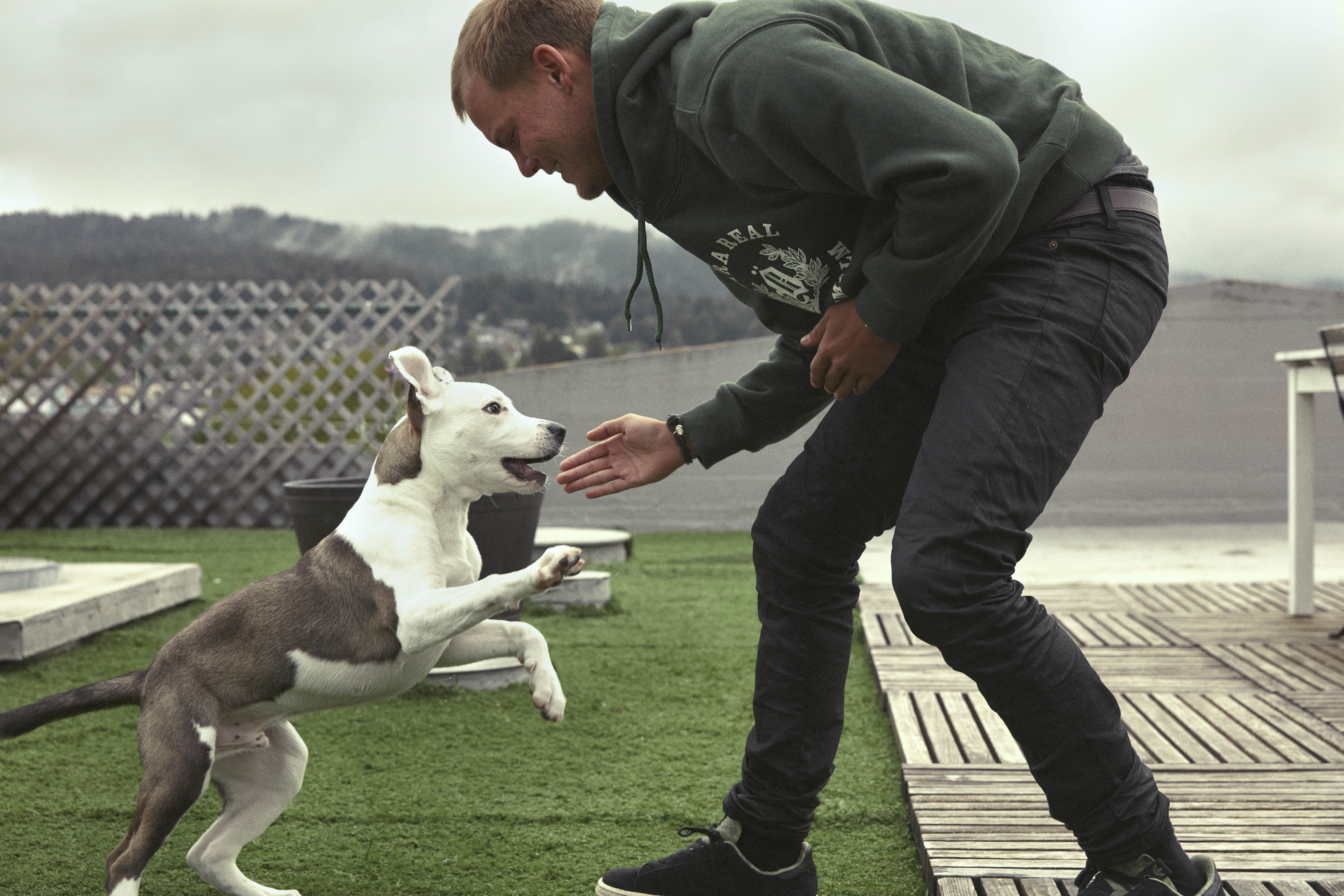 Sean Eriksson
Sean Eriksson
The 12 tracks that make up TIM, the third Avicii LP out June 6 via Interscope, were created largely during the final phase of Bergling’s life up on Blue Jay Way. (Bergling completed “Heaven,” a collaboration with Coldplay’s Chris Martin, in 2015.) On the album you can hear Carl Falk playing keyboards on the bouncy, shimmering “Bad Reputation,” Joe Janiak singing about true love on “Never Leave Me,” Al Fakir handling guitar on “Peace of Mind.”
It’s a tough dichotomy, this album. The melodies are bright and indelible, quintessential Avicii. The lyrics, the ones Bergling had been paying so much more attention to, tend to disturb. Songs are about calling out for help, searching for peace of mind, fading away. “Tickin’ tickin’ time keeps tickin’,” sing Vargas & Lagola on “Excuse Me Mr Sir,” “I'm rolling up to the end.”
Experts have called suicide an act of despair. Bergling had seemed so hopeful. In making this music he had once again gotten out what he was hearing in his head. Listening to the album, one wonders if he revealed everything, or nothing at all.
“It's so hard, now that we know what happened," Falk reflects. "It's so easy to think it was a goodbye record or something like that, but I don't know if it was. That I can't answer.”
 Sean Eriksson
Sean Eriksson
It was shortly after Klas Bergling and Anki Lidén spread their son's ashes at a Stockholm church garden that they decided his new music should be released, that it was obvious it’s what their son would have wanted. Minus the album tracks, the Avicii musical vault remains full. His parents will eventually decide if all this music will be released. For now, they’re focused on the Tim Bergling Foundation, which will center its efforts on mental health and other causes the artist cared about, such as climate change and protecting endangered species.
“It means a lot, no doubt, to do something good and that something good might come from this tragedy and the money Tim earned,” says his father, Klas.
All revenue from TIM will go to the foundation. Falk, Fogelmark and Albin, and Vargas & Lagola were called in to complete the songs selected for the album, most of which were roughly 85 percent finished when Bergling died.
“The songs selected for this album were not picked based on their commercial hit potential," Christopher Thordson, Avicii's business manager, explains. “The album rather represents an uncensored, yet coherent, body of work guided by Tim's notes and wishes to the highest degree possible.”
“I hope the music will be received in the right way, that people can see this is an effort by us, his friends, to celebrate Tim,” adds Falk. “To honor him by finishing these songs in his name.”
Fogelmark says he wept while working on “Freak” and “Hold the Line,” that finishing this music was deeply cathartic for him, and that he hopes hearing it extends this same catharsis to Bergling's fans. Nedler now has an Avicii tattoo covering most of his torso.
Back in Los Angeles, Aloe Blacc recorded his vocals for the album’s lead single, “SOS,” exactly the way Bergling had specified on a demo. Released in April, "SOS" went top 10 on the dance music charts. Blacc wishes that the late artist could've experienced its success himself. Says the singer, "Had he released it, it potentially could have been the linchpin to holding together whatever moment might've triggered him, and having support from millions of fans, you know?"
"SOS" was followed closely by TIM’s second single, “Tough Love.” Last month Tiësto, a longtime friend of Bergling’s, played his “Tough Love” remix at Electric Daisy Carnival in Las Vegas, and the tens of thousands of fans assembled before him lifted their hands in the air and danced.
The house on Blue Jay Way, once a place of so many possibilities, has been sold.
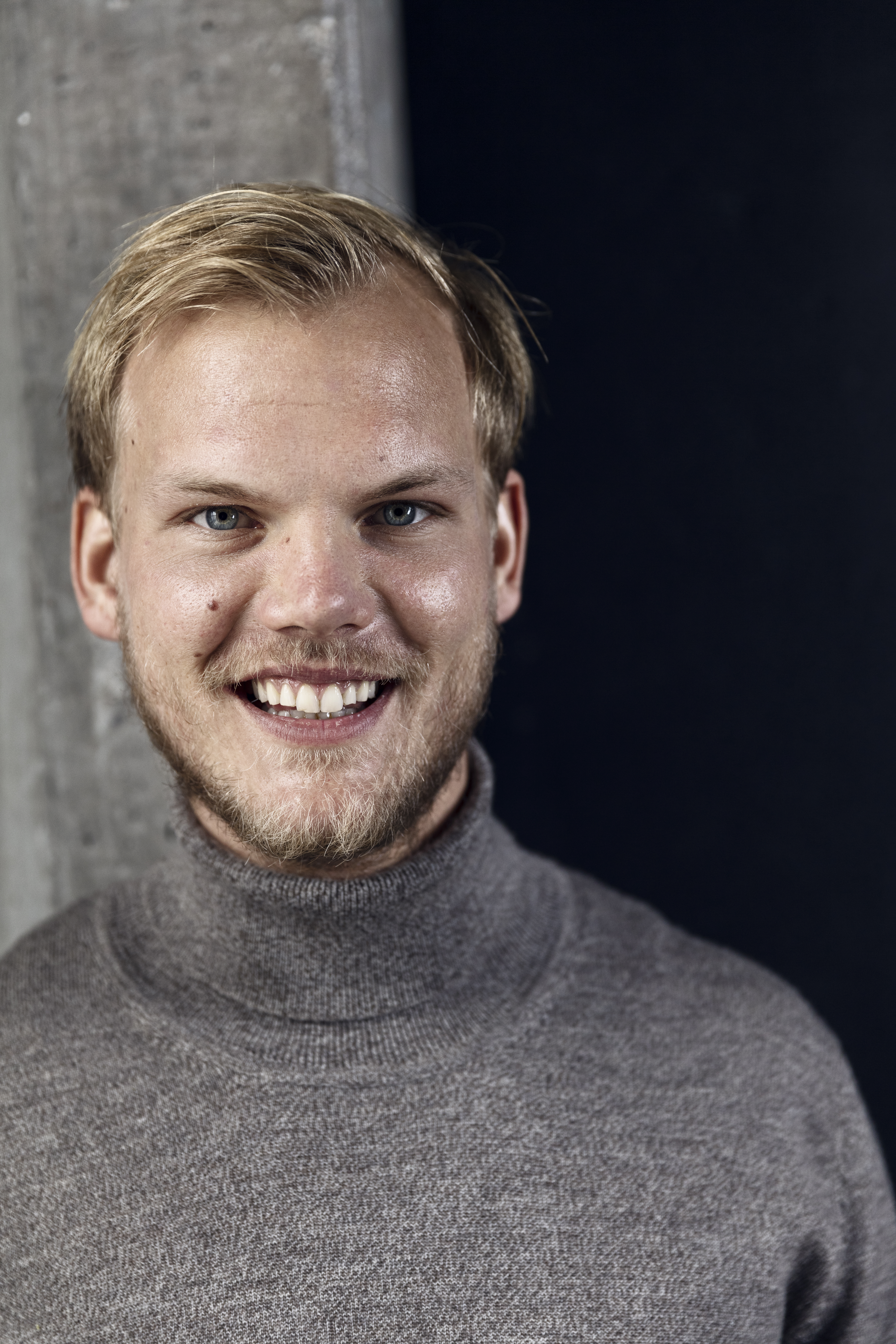 Sean Eriksson
Sean Eriksson
If you or anyone you know is experiencing suicidal thoughts or is in crisis, call the National Suicide Prevention Lifeline at 1-800-273-8255. The Lifeline provides free confidential support and resources 24 hours a day, seven days a week.


